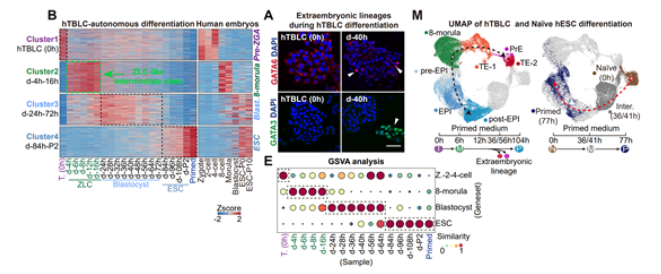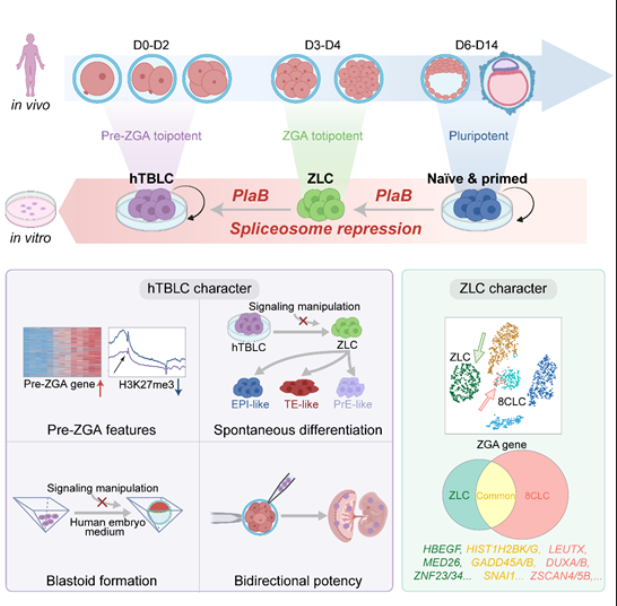
In recent years, scientists have made great breakthroughs in the field of stem cell research, especially in the capture and culture of totipotent stem cells. Totipotent stem cells are a kind of cells with the highest developmental potential, which can form a complete organism, including all tissues inside and outside the embryo. Although scientists have made some progress in the culture of mouse and human expanded pluripotent stem cells (EPSC), how to stably capture and maintain true totipotent stem cells in vitro has been an unsolved problem.
On June 5, 2024, Professor du Peng of Peking University School of Life Sciences, Peking University-Tsinghua Joint Center for Life Sciences and Peking University ribonucleic acid research center published an important research paper entitled "capturing totipotency in human cells by inhibiting splice bodies" in the journal Cell. This study successfully captured two new types of totipotent cells by programming human pluripotent stem cells by inhibiting splicing weight for the first time. The team found that by treating human initiating pluripotent stem cells with splice inhibitor Pladienolide B (PlaB), these cells could be reprogrammed into a unique ZGA-like cell (ZLCs). These cells are highly similar to early human 8-cell embryos in molecular characteristics, showing the characteristics of gene expression during the ZGA (zygotic genome activation) period. However, these ZLCs can not be maintained stably in vitro and can only exist for a short time.

In order to solve this problem, the research team developed a new medium MYCP, which contains low concentration of PlaB. Using this medium, the researchers successfully reprogrammed ZLCs into totipotent stem cells with pre-ZGA characteristics, namely hTBLCs (human totipotent blastomere-like cells). HTBLCs not only can be cultured stably in vitro, but also has highly similar molecular characteristics to early embryonic cells in vivo at the transcriptome and epigenetic level. Through a series of experiments, the research team proved the strong developmental potential of hTBLCs. In vivo and in vitro differentiation systems, hTBLCs can produce not only intraembryonic cell lineages, but also extraembryonic cell lineages. These results show that hTBLCs is a true totipotent stem cell and has a wide application prospect.

Studies have also shown that the spontaneous differentiation system based on hTBLCs can simulate the development of human embryos before implantation. The discovery provides scientists with a new tool for studying the development of early human embryos. At the same time, hTBLCs can form blastocyst-like structure in human embryo medium without adding any chemical small molecules, which further proves its totipotent characteristics. This study not only captured and stably cultured human totipotent stem cells with pre-ZGA characteristics for the first time, but also revealed that splice inhibition, as a general strategy, can promote the transformation of stem cells from pluripotency to totipotency in many species. In the future, hTBLCs is expected to play an important role in the fields of regenerative medicine and organ-like research.

In short, this study by Professor du Peng's team provides scientists with a new research direction and method, which is expected to promote the development of regenerative medicine and benefit more patients in the future. The research results not only further deepen our understanding of totipotent stem cells, but also provide a solid scientific basis for the culture and application of totipotent stem cells in vitro.
Source: https://doi.org/10.1016/j.cell.2024.05.010